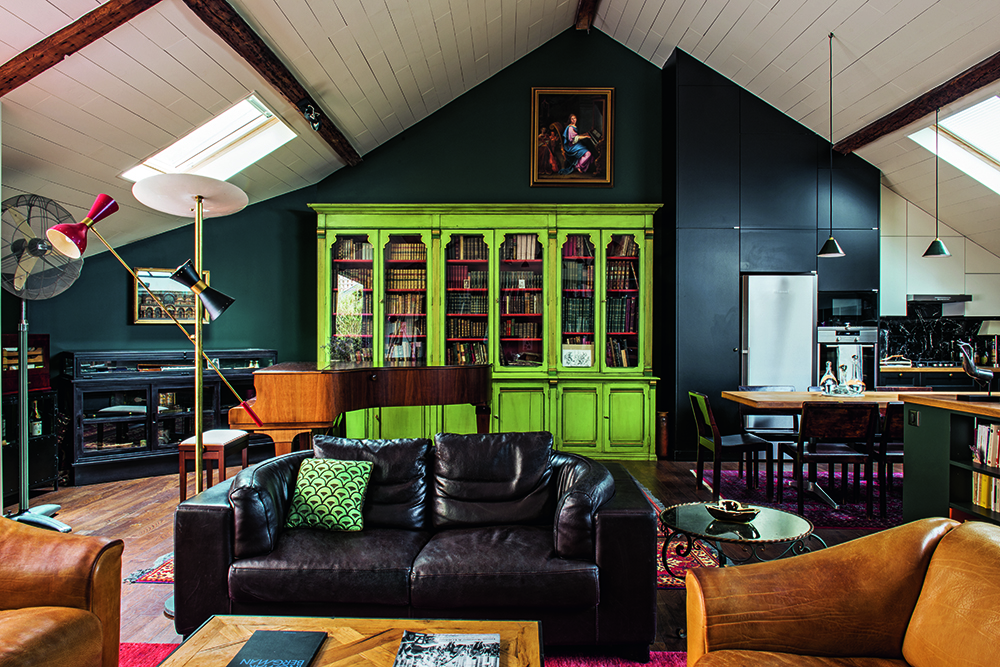Our conversation with Oliver Elser, co-author of “The Architectural Model: Tool, Fetish, Small Utopia,” continues:
How have architectural models evolved over time?
The most important precondition for this spread of architectural models beginning in the 1920s was the increasing availability of photography in connection with offset printing, which from around 1910 made it considerably simpler to reproduce images in books and magazines. The printing techniques available in the nineteenth century, in contrast, were suited only to the dissemination of drawings.
The development of models during the 1930s saw a professionalization of model-making and ever more potential for simulation in photographs and films. Several instances of Nazi Germany’s use of architectural models for propaganda images and films, exhibitions, and parades are provided in the catalog section. Particularly remarkable is the number of full-scale models made at this time. In the United States, gigantic show models were created for the 1939 World’s Fair in New York. The “City of Tomorrow” and “Futurama” were developed by architect Norman Bel Geddes.
In 1958, Jane Jacobs, whose book “The Death and Life of Great American Cities” was to secure her place in the historiography of architecture, described the transition to a new era in the history of the architectural model in an essay called “The Miniature Boom.” Whereas the prewar models made of cardboard, wood, and plaster, which she calls “painstaking handcraft,” were made in the architects’ own offices, there were now professional model-making workshops
that worked for more than one client and whose highly specialized equipment enabled them, for the first time, to undertake complex constructions and serial work in plastics and aluminum.
The book’s wealth of exhibits from the 1960s automatically creates the impression that utopian or visionary projects do especially well when conveyed through models. In the 1970s, models developed in two separate and even contrary directions: techniques of “model simulation” opened them up to use in processes of civic participation, even as models were moving still further away from reality, starting a career in the exhibition and art business.
The second trend of the 1970s was the discovery of the architectural model as an art object and its integration into the art market.
And today?
The 1990s brought further technological advances for architectural models. Computers took control of milling machines (at the start of the decade) and 3D printers (since the turn of the millennium), enabling models to be printed out in a single piece.
What did Arthur Drexler mean when he stated that “The model generated its own truth?”
Drexler argued that the architects of modernism had lost touch with reality partly due to drawing techniques schooled in works of contemporary avant garde art, but mainly due to their models, which they revered as small sculptures: “But when the primary object of the architect’s deliberations is the model itself, the ‘real’ building stands to it in the interesting but superfluous relationship of a giant copy of an egg to its miniature original.”
How do models deceive or reveal different intentions than those of the finished building?
We argue that models could be seen as tool, fetish or small utopia: Tools are models without which a planned architectural project would never have been
realized. Without Frei Otto’s soap film, structural engineering and surveying models, many of his projects would not have been feasible. A model can also be a seductive tool the architect uses to win over the client or the public. A model is more graphic than plans. However, models can lie as well. Architectural models are frequently promises, leave later design and construction-related developments open, and not perfectionist miniatures. As a fetish many models display more than a miniaturized copy. They are made of precious, sometimes remarkable materials, show an ideal state of affairs, and not reality. They are a “substitute activity”: Many models are more convincing than the project that was actually realized. In the 1960s in particular utopias architecture could not be big enough. Giant urban utopias were to be the architectural companions of social utopias. Models often portrayed these visionary designs.
Describe the relationship between drawing by hand, the computer and the model, please.
The hand expresses a personality. The computer is an important tool but it doesn’t give you a sense of the scale and the way how to build: One part after another. The model therefore is indispensable. Though is the classic, plastic model being replaced by virtual computer-generated versions? Are many architects shying
away from the effort involved in making models because computer simulations are far closer to reality? We’re skeptical and present the works of architects who still intensely concern themselves with models during the design process, and they are representative of many of their colleagues: For Christian Kerez the
models are either concept or construction models that allow him to test the elaborate load-bearing properties of his designs on the scale of models. Arno
Brandlhuber builds concept models, for example with an oyster, or creates a second opportunity for failed projects – in art. In Barkow Leibinger’s office the models hang like reliefs from the wall. Architect Roger Boltshauser builds models reminiscent of plaster models but made essentially of Styrodur. This special type of model buildinghas become his trademark.
For more information, go to http://press.uchicago.edu/ucp/books/book/distributed/A/bo13154795.html
[slideshow id=756]

